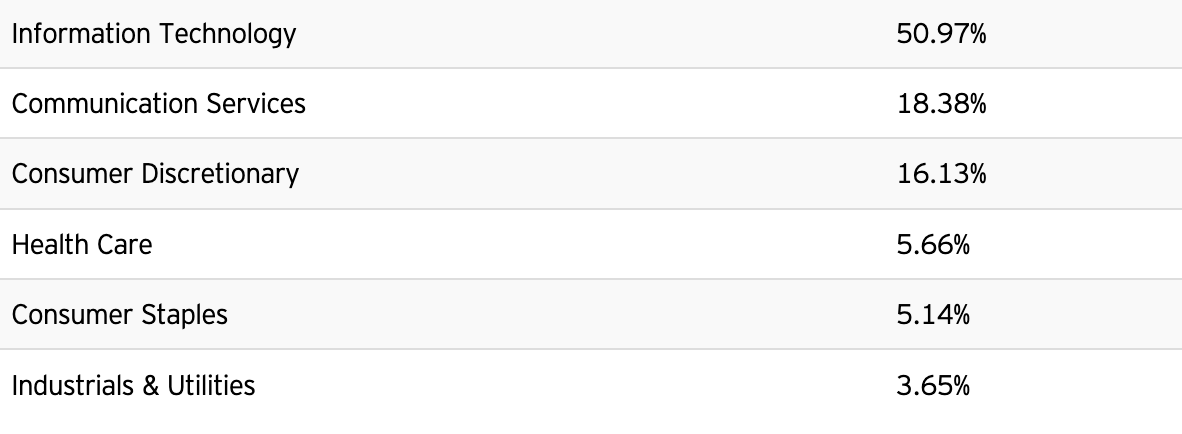by Innovation Team, Invesco Canada
When you think of the Nasdaq-100 and the Invesco NASDAQ 100 Index ETF1, the first thing that comes to mind is probably technology. It’s not surprising, as some of the world’s most recognizable tech companies including Apple, Microsoft and Nvidia (along with many others) make up nearly half of the index’s holdings.
But when you look beyond those bellwether names, you quickly come to realize that there’s more sector diversification than you may have first imagined – a fact that becomes clear when you look at the breakdown of the Nasdaq-100 components by sector. Allocations as of December 31, 2021 were:
Why is this kind of diversification so important? Because whether it’s in your own personal portfolio or one of the nation’s largest ETFs, diversification helps mitigate risk. And as the chart below clearly demonstrates, no one single sector (not even information technology) consistently outperformed year after year.
Take Utilities as a perfect case in point. While Utilities outperformed all other sectors in 2011, it subsequently went on to be a laggard in 2012 and 2013, only to rise to the top again in 2014 and then proceeded to bounce around in the middle of the pack.

When most investors focus on diversification, however, they typically focus on asset classes – wanting to allocate their portfolio broadly across large, mid and small cap stocks, foreign and emerging markets, corporate and government bonds, and cash. It’s an important diversification strategy, but it may overlook sector diversification.
Modern portfolio theory holds that a portfolio full of assets that are closely correlated will perform worse over time; whereas a portfolio full of assets that are less correlated to each other will perform better over time.
Of course if there’s a major market downturn, generally all assets are going to lose value (such as during the COVID correction in March 2020, when most stocks fell – with a few notable exceptions, such as Amazon and Walmart).
Why do sectors rotate in and out of favour?
While no two market cycles are identical, as the economy moves through different phases – from recovery to expansion to slowdown to recession – different sectors tend to outperform. During the economic growth stages (recovery and expansion), Information Technology, Consumer Discretionary, Industrials and Financials often take center stage. Then, as growth slows and stalls out (slowdown and recession), Consumer Staples, Healthcare and Utilities tend to shine.
Additionally, certain demographic and long-term secular trends can cause particular sectors to move in or out of favour ― for example, emerging challenges such as climate change bringing about a broad migration towards green energy.
One stop; multiple sectors
Not only is it important to diversify your investments across asset classes, but also within each asset class. Thanks to strong representation of secondary sectors such as Communication Services, Consumer Discretionary and Healthcare, the Invesco NASDAQ 100 Index ETF can offer some diversification in one fund. It’s not a guarantee for profit, and it doesn’t eliminate the risk of loss, but diversification is a potential way to help drive your portfolio’s performance.
1 On May 14, 2021, Invesco QQQ Index ETF was renamed Invesco NASDAQ 100 Index ETF.
This post was first published at the official blog of Invesco Canada.
















